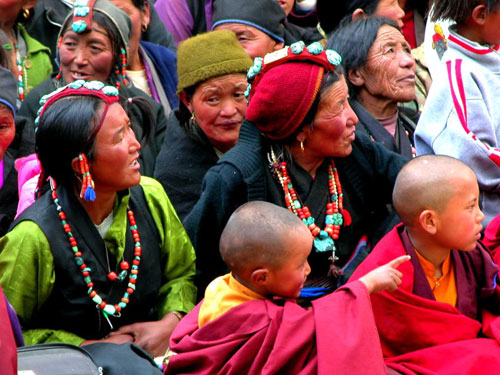|
|
The South
Asian Life & Times - SALT |
|
|||
|
Contents
Art
Threatened
Dwellers
Rom Whitaker
Tee
Time @ Delhi
|
|
||||
|
Upper Mustang – Untouched by Time
The former Himalayan kingdom of Lo – now known as
Upper Mustang – is a remote area in the upper reaches of Himalaya in Nepal,
largely inaccessible, and insulated from the modern world. Getting there is
not a joke. A 20-minute nerve-wrecking plane ride from Pokhara to Jomsom
through a frighteningly close high mountain terrain, aboard a
claustrophobia-inducing Dornier is the first leg of an arduous journey.
Thereafter, it is several days of trekking along the Kali Gandaki river up
to the Tibetan plateau. The Kali Gandaki River, which sweeps through one of
the deepest gorges in the world, “demarcates a 2,000-year-old trade route
between Tibet and India that is still in use today.” Clara Marullo in his book
The Last Forbidden Kingdom Mustang -
Land Of Tibetan Buddhism, wrote: “Although politically part of Nepal,
Upper Mustang is linked by religion, culture, and history to Tibet – and now
stands alone as one of the last truly pure Tibetan cultures existing today.
With its untouched temples, colourful festivals and red-robed lamas, the
kingdom preserves not only the daily vernacular of Buddhist ethics, but a
unique heritage of Tibetan religious art. ... In 1992 restrictions were
eased, and the long-forbidden kingdom was cautiously unlocked. “ The windswept, treeless mountain region of Upper
Mustang is the northern two-thirds of Mustang District - (one of Nepal’s 75
districts) - on the border between Nepal and Tibet. It covers an area of
2,563 square km in the upper valley of the Kali Gandaki River, to the north
of the Himalayan massif, and is home to over 6,000 people - the Lo or Lobas,
close cousins to the Tibetans. It is also home to the Dhokpas – pastoral
nomads – who move from pasture to pasture together with their animals and
tents made of yak wool.
|
|||||
|
Copyright © 2000 - 2012 [the-south-asian.com]. Intellectual Property. All rights reserved. |
|||||
